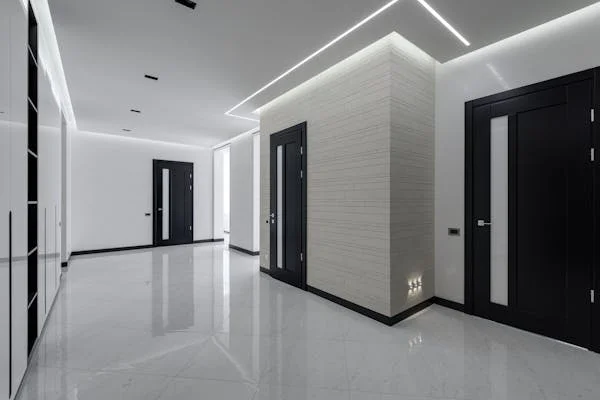Energy-efficient lighting has become vital to modern homes and businesses as people search for ways to reduce electricity costs. One of the most effective options is switching to LED panel lights, which offer significant savings on electric bills and provide brighter, more uniform lighting. LEDs are designed to use less power while delivering the same or better output than traditional lighting options like incandescent and fluorescent bulbs. We will explore how LED panel lights work, their benefits, and how making the switch can lower energy costs and contribute to environmental sustainability.
Understanding LED Panel Lights
LED panel lights are popular for both commercial and residential applications due to their energy efficiency and sleek design. Unlike traditional light bulbs, LEDs use semiconductor materials to produce light, significantly reducing energy consumption. LED panel lights are designed to provide uniform and high-quality lighting, making them ideal for offices, homes, and other spaces where bright, consistent lighting is needed. The primary difference between LED and conventional bulbs is their ability to convert more energy into light rather than heat. This means less energy is wasted, making LED panel lights an effective solution for reducing electricity usage and lowering energy bills.
Selection of led panel lights at Simple Lighting are available in various sizes, colors, and designs, making them versatile for different spaces. Whether you’re lighting a large office, a small room, or an industrial warehouse, these lights can be customized to suit your needs while maintaining energy efficiency. Furthermore, LED panel lights have a longer lifespan than traditional lighting, meaning they need to be replaced less frequently, which can result in additional savings over time.
How LED Panel Lights Contribute to Lower Energy Bills
One primary reason people switch to LED lighting is the potential for substantial savings on their electric bills. LED panel lights are incredibly energy-efficient, using up to 80% less energy than traditional incandescent bulbs. This means that LED lights consume significantly less electricity for the same light output, directly lowering energy costs. A typical LED panel light can consume only a fraction of the energy incandescent, or fluorescent bulbs require to produce the same amount of light.
Additionally, LED panel lights generate much less heat than other lighting options. This feature can lead to further savings in energy consumption, as cooling systems don’t need to work as hard to regulate the temperature in a room. In warmer climates or environments with many lights, the heat generated by traditional lighting can increase the load on air conditioning systems, leading to higher energy usage. With their lower heat output, LED panel lights help mitigate this issue, contributing to even greater savings on your electric bill.
Longevity and Durability: More Savings Over Time
LED panel lights are built to last much longer than conventional lighting sources, making them a smart long-term investment. On average, an LED light can last up to 50,000 hours or more, compared to an incandescent bulb’s 1,000 to 2,000-hour lifespan. This extended lifespan means that you’ll need to replace your LED panel lights far less often, reducing waste and eliminating the costs of frequent bulb replacements.
Moreover, LED panel lights are more durable and resistant to damage than traditional ones. They can withstand bumps, vibrations, and other impacts that might cause different types of lighting to break or malfunction. This added durability makes LED panel lights an excellent choice for areas subject to movement or harsh conditions, such as warehouses or industrial settings. The cost savings from not replacing broken lights can increase significantly over time, increasing the value of switching to LED technology.
Environmental Benefits of Switching to LED Panel Lights
Switching to LED panel lights saves money on energy bills and has significant environmental benefits. LED lights consume less power, reducing the demand for electricity from fossil fuel-based power plants. By using less energy, LED lights contribute to a decrease in greenhouse gas emissions, a major driver of climate change. As more individuals and businesses adopt energy-efficient lighting solutions like LED panel lights, the collective reduction in energy consumption helps reduce the overall environmental impact of lighting.
Furthermore, LED lights are free from harmful chemicals such as mercury, commonly found in fluorescent lighting. The absence of hazardous materials makes LED panel lights safer to use and dispose of. This eco-friendly feature aligns with global efforts to reduce environmental pollution and promote sustainable practices. By choosing LED panel lights, consumers can positively contribute to their energy savings and the planet’s health.
Switching to energy-efficient LED panel lights is a practical and cost-effective way to reduce your electric bill while contributing to environmental sustainability. These lights use significantly less energy compared to traditional incandescent and fluorescent bulbs, resulting in immediate savings on electricity costs. Their longer lifespan and durability also mean fewer replacements and maintenance, reducing long-term expenses. In addition to the financial benefits, LED panel lights are an eco-friendly choice, reducing energy consumption and minimizing harmful environmental impacts. By switching to LED lighting, you can enjoy a brighter, more efficient lighting solution that saves money and supports a greener future.





